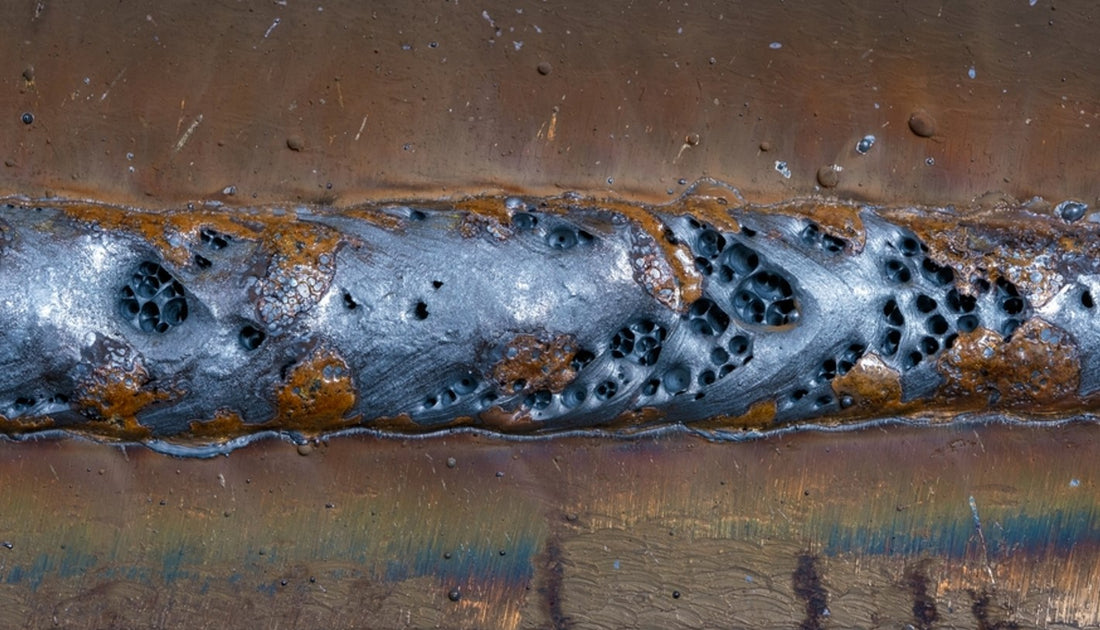Porosity in Welding: Identifying Common Issues and Implementing Finest Practices for Avoidance
Porosity in welding is a pervasive concern that commonly goes unnoticed till it triggers significant problems with the stability of welds. This typical problem can compromise the toughness and durability of welded frameworks, positioning security risks and leading to expensive rework. By recognizing the origin of porosity and carrying out efficient prevention methods, welders can considerably boost the high quality and reliability of their welds. In this conversation, we will check out the essential aspects adding to porosity development, examine its harmful results on weld efficiency, and review the ideal techniques that can be taken on to minimize porosity occurrence in welding procedures.
Typical Sources Of Porosity

Another frequent culprit behind porosity is the visibility of contaminants on the surface area of the base metal, such as oil, grease, or corrosion. When these pollutants are not properly gotten rid of before welding, they can evaporate and become entraped in the weld, triggering defects. Using unclean or damp filler materials can present impurities into the weld, adding to porosity concerns. To mitigate these usual reasons for porosity, comprehensive cleaning of base metals, appropriate shielding gas selection, and adherence to optimal welding criteria are essential techniques in accomplishing top notch, porosity-free welds.
Impact of Porosity on Weld Top Quality

The existence of porosity in welding can considerably jeopardize the architectural honesty and mechanical residential or commercial properties of bonded joints. Porosity creates spaces within the weld metal, deteriorating its overall toughness and load-bearing ability. These spaces function as stress concentration points, making the weld more at risk to fracturing and failing under applied loads. In addition, porosity can minimize the weld's resistance to rust and other environmental aspects, additionally diminishing its longevity and performance.
Welds with high porosity degrees tend to show lower impact stamina and reduced capability to deform plastically prior to fracturing. Porosity can restrain the weld's capacity to effectively send pressures, leading to premature weld failure and potential security risks in essential structures.
Best Practices for Porosity Avoidance
To enhance the structural honesty and high quality of welded joints, what details procedures can be implemented to lessen the event of porosity during the welding procedure? Making use of the right welding method for the certain product being bonded, such as adjusting the welding angle and weapon position, can better protect against porosity. Routine examination of welds and immediate removal of any problems identified throughout the welding procedure are necessary techniques to avoid porosity and produce premium welds.
Relevance of Appropriate Welding Techniques
Applying appropriate welding techniques is extremely important in making certain the click for more structural integrity and quality of welded joints, developing upon the structure of reliable porosity prevention steps. Extreme warm can lead to enhanced porosity due to the entrapment of gases in the weld swimming pool. Furthermore, utilizing the proper welding parameters, such as voltage, existing, and travel speed, is vital for attaining audio welds with minimal porosity.
Moreover, the selection of welding procedure, see post whether it be MIG, TIG, or stick welding, ought to straighten with the details requirements of the job to make certain ideal outcomes. Correct cleansing and prep work of the base metal, along with picking the right filler product, are also crucial elements of skillful welding techniques. By adhering to these best methods, welders can lessen the threat of porosity formation and create high-grade, structurally sound welds.

Checking and Top Quality Control Actions
Examining procedures are crucial to find and stop porosity in welding, making sure the stamina and resilience of the final product. Non-destructive screening methods such as ultrasonic testing, radiographic testing, and visual examination are commonly utilized to determine prospective defects like porosity.
Performing pre-weld and post-weld assessments is additionally important in preserving top quality control criteria. Pre-weld evaluations include verifying the products, devices settings, and tidiness of the work location to avoid contamination. Post-weld assessments, on the other hand, assess the final weld for any flaws, consisting of porosity, and validate that it fulfills specified criteria. Implementing a thorough quality assurance plan that consists of thorough screening treatments and assessments is extremely important to decreasing porosity issues and ensuring the general quality of welded joints.
Conclusion
To conclude, porosity in welding can be a common problem that affects the top quality of welds. By identifying the common reasons of porosity and implementing ideal practices for avoidance, such as proper welding methods and testing steps, welders can ensure top quality a fantastic read and reliable welds. It is important to focus on prevention approaches to minimize the occurrence of porosity and preserve the honesty of welded structures.